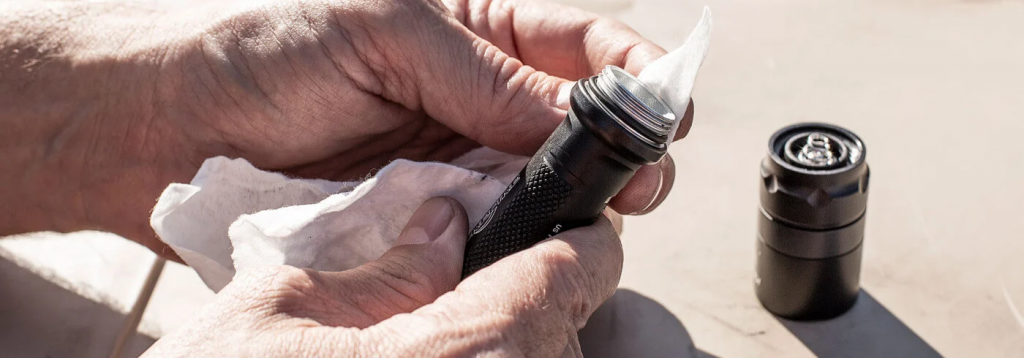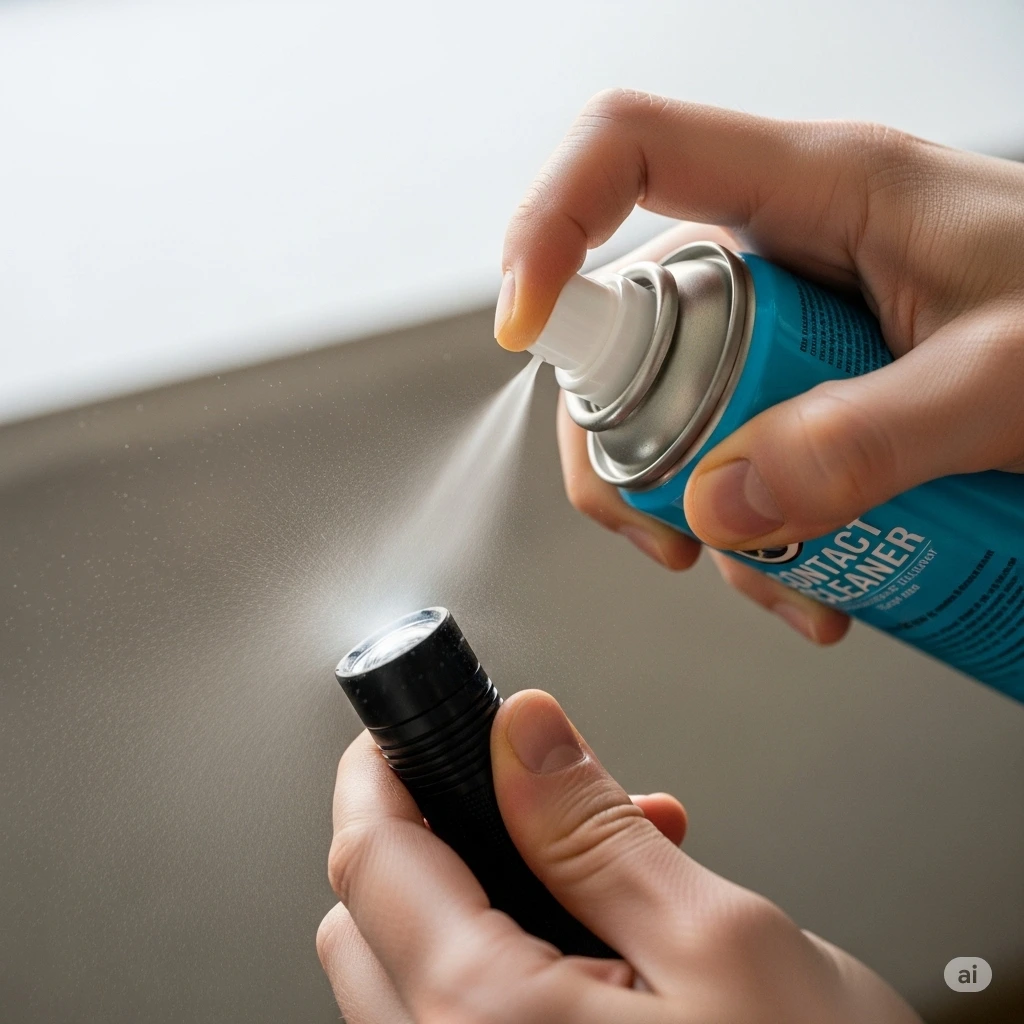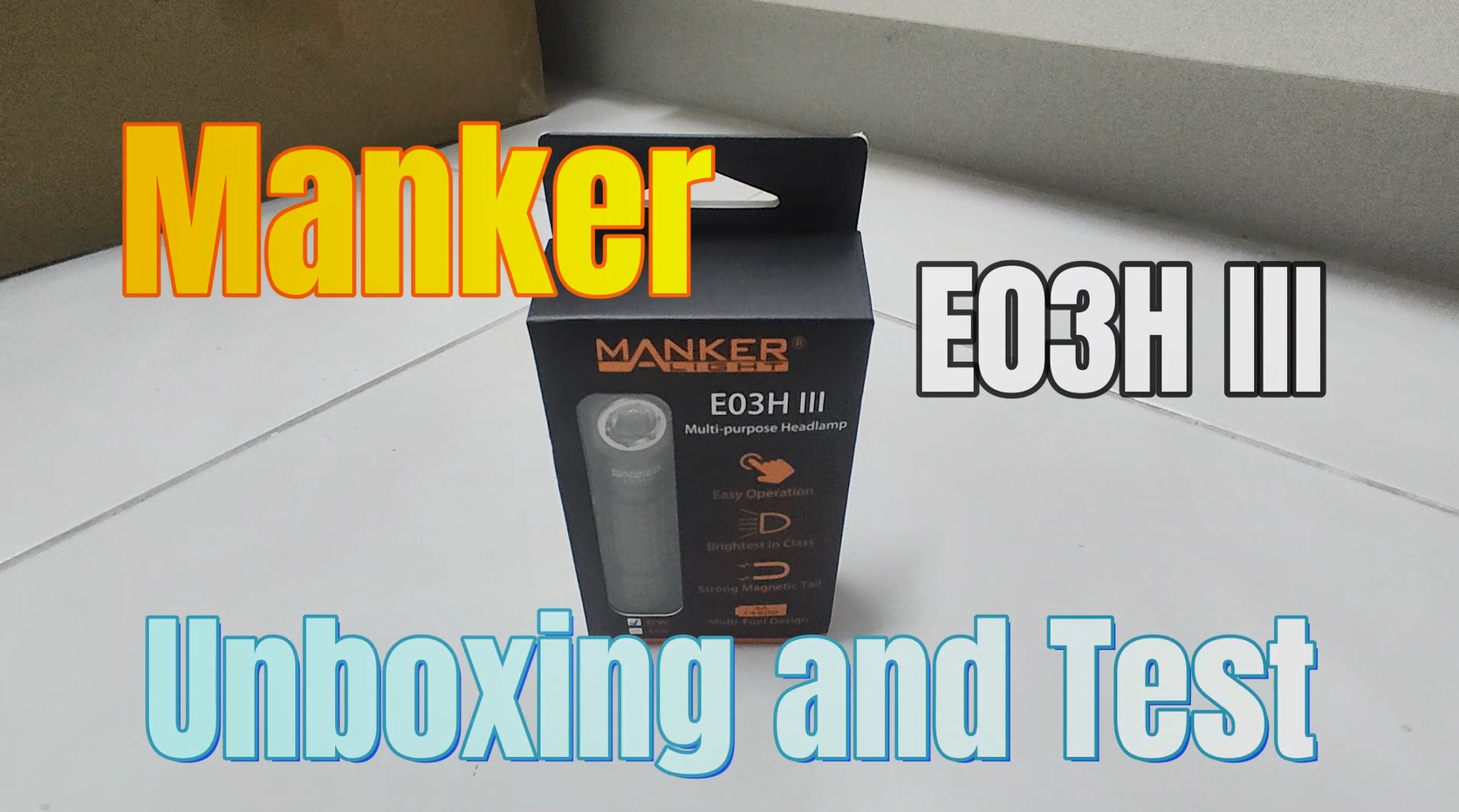EDC
everyday carry
flashlights
review
torchlights
flashlight maintenance work, flashlight o-ring maintenance, flashlight silicone grease o-ring, how to waterproof flashlight, preserve rubber o-ring, silicone grease for flashlight, silicone grease o-ring, silicone grease usages, torchlight maintenance, waterproofing torchlight
9M2PJU
0 Comments
Silicone Grease in Flashlights and O-ring Lubrication
Flashlights and O-rings might seem like mundane items, but they play crucial roles in many aspects of our lives, from everyday use to specialized professional applications. Silicone grease is a key component in maintaining the functionality and longevity of both. Let’s dive deeper into how silicone grease is used in these contexts.
- Silicone Grease in Flashlights
Flashlights, particularly high-quality and professional-grade models, rely heavily on silicone grease for several reasons:
1.1 Water Resistance
Many flashlights, especially those designed for outdoor use, emergency services, or diving, need to be water-resistant or waterproof. Silicone grease plays a crucial role in achieving this:
- Thread Lubrication: It’s applied to the threads of the flashlight body, tail cap, and head to create a water-tight seal when these components are screwed together.
- O-ring Protection: Silicone grease is used to lubricate and protect O-rings that seal different parts of the flashlight.

1.2 Electrical Contact Protection
Silicone grease can protect the electrical contacts within the flashlight:
- Battery Compartment: A thin layer of silicone grease on battery contacts can prevent corrosion, especially in humid environments.
- Switch Mechanisms: Some flashlight switches benefit from silicone grease to ensure smooth operation and protect against moisture ingress.
1.3 Heat Dissipation
In high-powered LED flashlights, silicone grease with good thermal conductivity properties can be used to:
- Improve heat transfer between the LED module and the flashlight body, acting as a thermal compound.
- Enhance the overall heat dissipation, potentially extending the life of the LED and allowing for higher performance.

1.4 Smooth Operation
Silicone grease ensures smooth operation of various flashlight components:
- Focusing Mechanisms: In flashlights with adjustable focus, silicone grease helps the focusing ring or head to turn smoothly.
- Mode Selection: For flashlights with twisty interfaces for mode selection, silicone grease reduces wear and ensures consistent performance.
- O-ring Lubrication with Silicone Grease
O-rings are used in countless applications to create seals between two or more parts. Proper lubrication of O-rings with silicone grease is crucial for their performance and longevity.

2.1 Benefits of Silicone Grease for O-rings
- Reduced Friction: Silicone grease reduces friction between the O-ring and the surfaces it contacts, preventing wear and extending the O-ring’s life.
- Improved Sealing: A thin layer of grease can fill minor imperfections in the mating surfaces, enhancing the seal’s effectiveness.
- Protection: Silicone grease protects O-rings from environmental factors like moisture, ozone, and UV radiation, which can cause degradation.
- Assembly Aid: The grease makes it easier to install O-rings without damage, especially in tight-fitting applications.
2.2 Application Techniques
Proper application of silicone grease to O-rings is crucial:
- Clean Surface: Ensure the O-ring and mating surfaces are clean and dry before applying grease.
- Thin Layer: Apply only a thin layer of grease. Excess grease can attract contaminants and potentially interfere with the seal.
- Even Coverage: Ensure the entire O-ring is evenly coated, but avoid over-application.
- Compatibility: Always check that the silicone grease is compatible with the O-ring material, as some rubbers may swell or degrade with silicone exposure.
2.3 Specific O-ring Applications
Silicone grease is used for O-ring lubrication in various fields:
- Diving Equipment: O-rings in regulators, tank valves, and underwater camera housings.
- Automotive: O-rings in air conditioning systems, fuel systems, and various engine components.
- Aerospace: Critical seals in aircraft and spacecraft systems.
- Plumbing: O-rings in faucets, valves, and pipe fittings.
- Laboratory Equipment: Seals in vacuum systems and scientific instruments.

2.4 Maintenance Considerations
Regular maintenance of O-rings with silicone grease is important:
- Inspection: Regularly inspect O-rings for signs of wear, degradation, or dry-out.
- Reapplication: Reapply silicone grease as needed, especially after cleaning or when the O-ring feels dry.
- Replacement: Even with proper lubrication, O-rings will eventually need replacement. Follow manufacturer guidelines for replacement intervals.
- Challenges and Considerations
While silicone grease is excellent for many O-ring and flashlight applications, there are some considerations:
- Material Compatibility: Some plastics and rubbers may not be compatible with silicone grease. Always check manufacturer recommendations.
- Performance Limits: In extreme pressure or temperature applications, specialized non-silicone lubricants may be required.
- Contamination: In some industries (e.g., automotive painting), silicone contamination can cause serious issues. Care must be taken to prevent unintended transfer.
- Future Developments
Research continues in developing improved silicone grease formulations for O-rings and flashlights:
- Self-healing Properties: Advanced formulations that can repair minor damage to O-rings.
- Enhanced Water Repellency: For even better performance in underwater and high-humidity environments.
- Improved Thermal Properties: For better heat dissipation in high-powered LED flashlights.
- Smart Lubricants: Greases that change color to indicate when reapplication is needed.

In conclusion, silicone grease plays a vital role in the performance and longevity of both flashlights and O-rings. Its unique properties make it an ideal choice for these applications, providing water resistance, protection against wear, and ensuring smooth operation. As technology advances, we can expect to see even more specialized and high-performance silicone grease formulations developed for these critical yet often overlooked components.







Post Comment